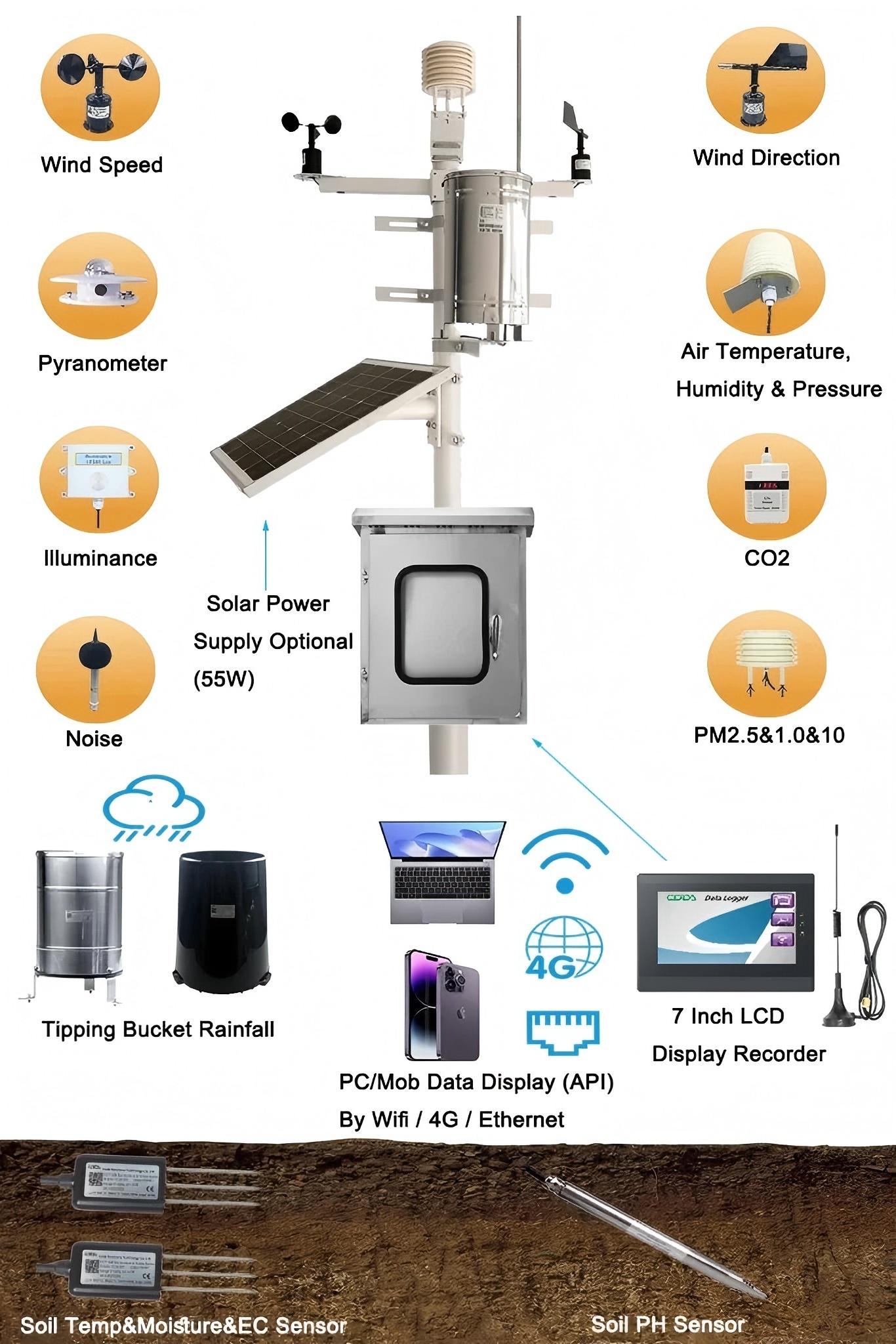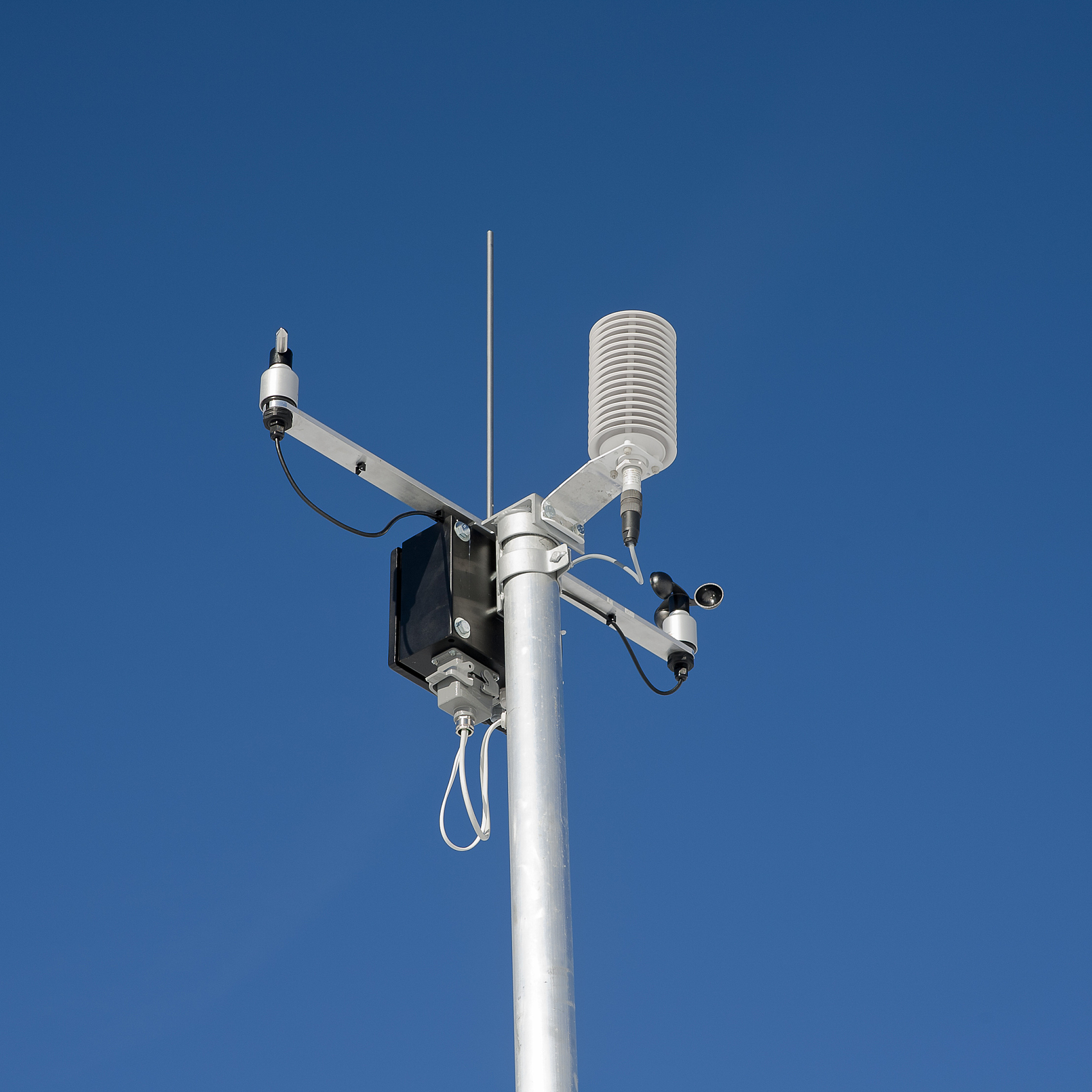In environmental monitoring, light sensors and automatic weather stations (AWS) are essential tools. They provide real-time data for many uses. These innovations are transforming how we observe weather patterns, monitor environmental shifts, and enhance energy efficiency.
In this article, we will look at how light sensors and automatic weather stations work. We will also discuss their uses and why they are important for today's environmental monitoring systems.
A light sensor, also called a photo sensor, is a device that detects light and measures how strong it is.
Many applications use these sensors. They automatically adjust systems based on light conditions. For example, they control lighting, detect motion, and monitor the environment.
Numerous light sensor varieties exist, such as photodiodes, phototransistors, and photoresistors. People frequently use these devices to detect visible, infrared, or ultraviolet (UV) light. The data from these sensors is important for understanding light levels in any area, both indoors and outdoors.

An Automatic Weather Station (AWS) is a group of tools that measure and record weather data automatically. An AWS typically includes sensors for measuring temperature, humidity, wind speed and direction, precipitation, barometric pressure, and solar radiation.
Many areas, like agriculture, research, and city planning, use AWS systems. They provide accurate and timely weather data. These systems are important for watching local weather patterns. They help improve forecasts and support decisions in agriculture and energy production.
Light sensors are important for automatic weather stations. They measure solar radiation or light intensity in the environment. Solar radiation is a key parameter for weather monitoring, as it influences temperature, atmospheric pressure, and humidity levels.
In an AWS setup, solar radiation sensors, called pyranometers, use light sensors. They measure the total sunlight received on a flat surface. This data helps weather stations figure out the energy budget of an area. This affects weather predictions, crop yield estimates, and energy management.
Some of the main benefits of integrating light sensors with automatic weather stations include:
Accurate Solar Radiation Measurement:
Light sensors help capture solar radiation data accurately. This data is important for understanding the energy that reaches the Earth's surface. This can inform decisions related to renewable energy production (such as solar power) and agriculture.
Energy Efficiency: By using light sensors to monitor sunlight levels, automatic weather stations can automate energy-saving measures in smart buildings and agricultural facilities. For example, when light levels fall below a certain point, lighting or irrigation systems can turn on. This helps save energy and cut costs.
Weather Prediction:
Solar radiation data collected by light sensors helps weather stations predict temperature changes, cloud cover, and extreme weather. High solar radiation may mean clear skies. Low radiation could suggest cloudy weather or the start of rain.
Improved Irrigation and Agriculture Monitoring:
In farming, light sensors in AWS can help farmers check sunlight and soil moisture. This ensures crops get the right amount of light to grow well. This can lead to improved crop yield and more efficient water use.
Light sensors, when integrated into automatic weather stations, enhance the monitoring of various environmental and atmospheric conditions. Here are some key applications:
Solar Power Generation Monitoring:
Light sensors within AWS are essential for measuring solar radiation, which directly impacts the performance of solar panels. Understanding the intensity of sunlight allows us to optimize solar energy systems for better energy production and efficiency.
Climate Research:
Climate researchers use AWS with light sensors. They monitor long-term weather patterns and track changes in solar radiation. These insights are valuable for studying climate change, understanding global warming, and predicting future environmental trends.
Agriculture: In agriculture, automatic weather stations equipped with light sensors help farmers monitor sunlight levels, temperature, and humidity. This data aids in decision-making related to planting, irrigation, and crop protection.
Weather Forecasting and Disaster Management:
Data from light sensors in AWS systems helps with weather forecasting. It gives important insights into weather trends, storm predictions, and severe weather warnings. By detecting changes in solar radiation, AWS can provide early warnings of weather anomalies that could impact local communities.
Environmental Protection:
Light sensors in AWS can monitor environmental conditions. They provide real-time data on UV radiation levels. This information is important for protecting ecosystems, human health, and wildlife.

Combining light sensors with an automatic weather station offers many benefits. This setup provides accurate and real-time environmental data for users. Reasons to integrate AWS with light sensors include the following:
Comprehensive Weather Data:
Automatic weather stations with light sensors provide a wide range of weather data. This includes temperature, humidity, wind speed, and solar radiation. This information helps people make better and more informed decisions.
Smart Automation:
Light sensors help AWS work automatically. They control lighting, irrigation, and other systems based on light levels. This helps save time, energy, and resources.
Energy Savings:
For businesses and homes using solar energy or automated lighting, light sensors in AWS can help save energy. This can lower electricity costs.
Long-Term Monitoring: AWS systems with light sensors provide continuous, long-term environmental monitoring. This is great for tracking seasonal trends. It helps us understand long-term climate changes. It also supports data-driven decisions in agriculture, energy, and urban planning.
Coda Sensor offers high-quality light sensors and automatic weather stations. They design their solutions for different industries.
Coda Sensor's automatic weather stations have advanced light sensors. These sensors measure solar radiation extremely accurately. This helps with precise weather monitoring and data collection.
To improve energy use, boost farming, or monitor climate trends, Coda Sensor’s products can help. They provide reliable data to support smart decision-making.
Light sensors and automatic weather stations are vital for modern environmental monitoring. By adding light sensors to weather stations, we get accurate and real-time data. This data helps improve energy efficiency, weather forecasting, and environmental management.
No matter if you work in agriculture, energy, or research, light sensors and AWS are great tools. They help create a smarter and more sustainable future.
Check out Coda Sensor’s new light sensors and weather station solutions today. Improve your environmental monitoring now!
Discover how real-time weather station data impr
Discover how Automatic Weather Stations (AWS) ar
Discover how CODA gas sensors are the invisible
Contact: Molly
Phone: +86-17775769236
Tel: 86-0731-85117089
Email: molly@codasensor.com
Add: Building S5, Aux Square, Yuelu District, Changsha City, Hunan Province, China
We chat